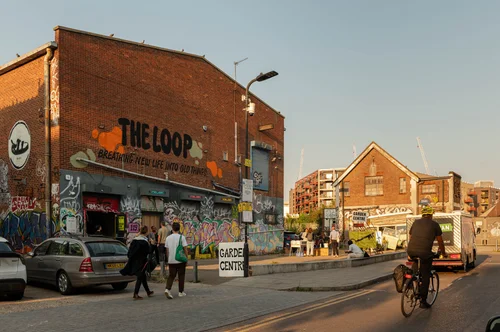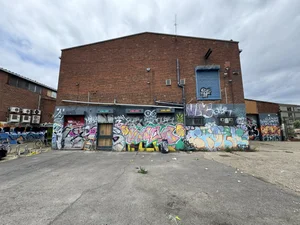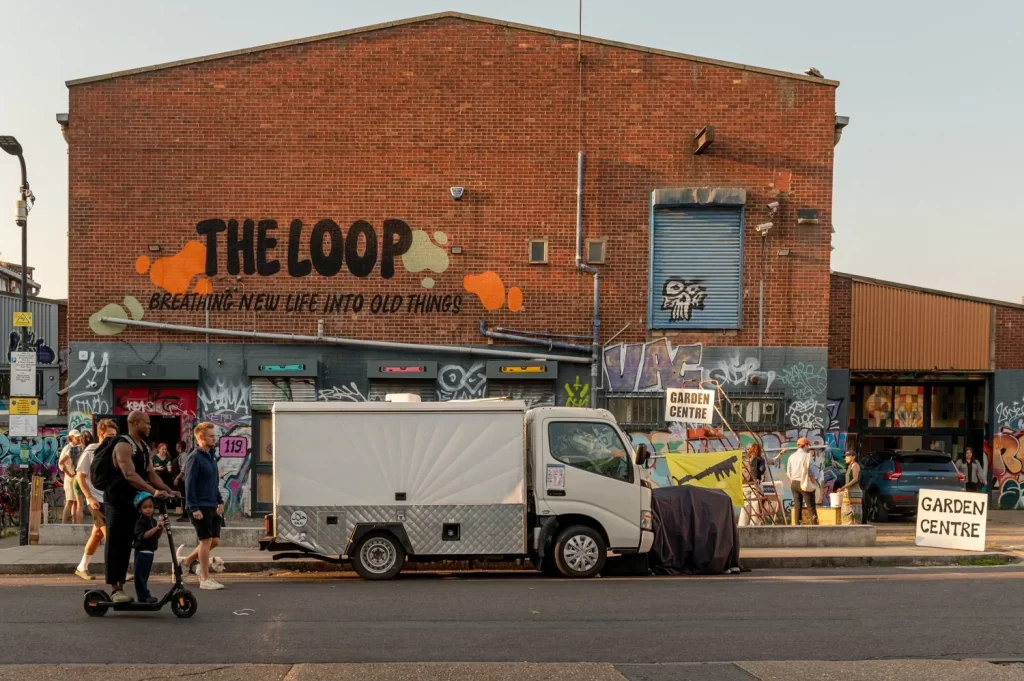Celebrating Hackney’s past, shaping its future – since 1967
As cities look for practical ways to reduce waste and emissions, Hackney Wick is testing one approach – The Loop. The new circular economy hub brings together local businesses, researchers, and residents to explore how a neighbourhood can reuse its resources.

“Hackney Wick is already a dense creative economy with a long industrial lineage and a current CEZ designation. It has the mix of diverse talent, risk-taking culture, and visibility that helps prototypes formed out of new cultural customs become markets,” says Patrick Scally, Executive Director of the Hackney Wick and Fish Island Community Development Trust (CDT) . “It’s a place of ever-evolving ideas and bumpability.”
Located at 199 Wallis Road, The Loop is a collaboration between the Hackney Wick and Fish Island CDT and Arbeit Studios. It supports circular economy businesses by helping them grow, connect with others, and test new processes. The building operates under a community ownership model and also hosts the East London garden centre Growing Concerns.
The Loop has featured in the Open House Festival in both 2024 and 2025, listed on London’s Cultural Engine curated by Justine Simons, Deputy Mayor for Culture and the Creative Industries. The event offers visitors a look at how local circular businesses operate, with participants including Are You Mad, Fantasy Fibre Mill, FibreLab, Looply, Reuser, Roosa Tulvio & Mathias Gmachl, Silo, Sustainable Hackney & Hackney Fairtrade Group, Yodomo, and Zhero.
Businesses based at The Loop have gained visibility and new opportunities, including collaborations with the V&A and Here East.
“If we don’t have the answer, we can find it in this building,” says Nad from Are You Mad – a comment that Scally says captures the hub’s collaborative spirit.

The Loop also helps make circular products and services accessible to the local community, such as finding new uses for local waste materials or linking tenants with research projects.
“From our perspective, the circular economy is a new economic paradigm – one that eliminates waste, keeps materials and products in use at their highest value, and regenerates natural systems,” says Scally.
“It matters locally because it makes the neighbourhood more resilient, reduces carbon and waste, and keeps more value circulating rather than leaking out. More people have a moral and material say in how an area is shaped, and are owners, not just beneficiaries, of change.”
Can It Be Replicated?
An independent ReLondon case study describes The Loop as a small-scale model that could be replicated in other neighbourhoods. The CDT is already exploring similar projects in East London while keeping the Hackney Wick approach. Scally identifies the following essentials:

Looking ahead, Scally says the goal is to expand the space to create secure, affordable work areas, improve infrastructure such as shared yards and on-site renewable energy, and increase civic involvement by linking The Loop with local planning processes and a potential Circular Economy Zone.
“It’s the right place and time for a circular economy hub like ours,” says Scally.